quinta-feira, 19 de janeiro de 2017
quarta-feira, 18 de janeiro de 2017
domingo, 8 de janeiro de 2017
quarta-feira, 4 de janeiro de 2017
KOLFF en Expo Automatización 2016

Recientemente KOLFF participó en la 8ª Edición de la Expo Automatización realizada este año en la Sede San Joaquín de Duoc UC. En esta cita, llevada a cabo por la Asociación de la Industria Eléctrica, se contó con la presencia de destacados relatores del mundo tecnológico quienes entregaron sus conocimientos en variadas intervenciones enfocadas a la automatización en Chile. Entre los temas tratados se encontraron la eficiencia energética, las comunicaciones industriales y la robótica.
El stand de KOLFF destacó la relevancia de los equipos de respaldo eléctrico existentes en las empresas, y su eficiencia en la automatización de los sistemas de activación tras un corte del suministro energético.
LINK ORIGINAL EN LA WEB
terça-feira, 3 de janeiro de 2017
Design of a Power Converter for a Non-starting Air Conditioner Compressor in Commercial Vehicles - 상용차의 무시동시 에어컨 압축기용 전력변환기 설계 - Keun-Woo Han Department of Electrical Engineering Graduate, School Chonnam National University - SOUTH KOREA
Design of a Power Converter for a Non-starting Air Conditioner Compressor in Commercial Vehicles 상용차의 무시동시 에어컨 압축기용 전력변환기 설계
Keun-Woo Han
Department of Electrical Engineering Graduate, School Chonnam National University
(Abstract)
Recently, the direction of automotive technology development is concentrated on the reduction of the greenhouse gases accelerating global warming, as well as fuel efficiency improvement against rising oil prices. In particular, as a means of transportation with high transport efficiency compared to its vehicle market share, commercial vehicles are playing a key role in the national logistics industry. In addition, they also play an important role in all transportation sectors, supporting social overhead capital including urban construction, roads, bridges, harbors, etc. Consequently, their annual average mileage is 3.4 times that of passenger cars, with significant oil consumption or CO2 emission, which increases the need to develop eco-friendly technologies and increase energy efficiency. Commercial vehicles, which were recognized as a simple means of transportation in the past, have also become widely recognized as a second living space with the addition of space for the driver to sleep . Accordingly, existing commercial vehicle development is experiencing a change of direction from performance to the direction in which importance is placed on safety, comfort and convenience. The air conditioning system of a vehicle is a core component that maintains its interior temperature at a comfortable level according to the preference of passengers, and is of great significance in the aspect of increased comfort. In general, vehicle air conditioning systems refer to a unit that maintains a vehicle’s room temperature as desired by its driver using the energy generated by engine operation (driving or idling). Since the operation of such air conditioning systems utilize part of the engine’s driving force, it has s significant relation to the vehicle’s fuel efficiency. In particular, in the case of commercial vehicles, the utilization rate of an air conditioning system depends greatly on the driving habits of a driver when waiting for work during the summer season or when a driver frequently sleeps in the vehicle at night. Consequently, commercial vehicles which use air conditioners frequently and for long periods during the summer season need to have their large engines operating frequently, thereby causing environmental pollution due to excessive fuel consumption and exhaust gas. In addition, it is required that new vehicles must meet the Euro III Emission regulation and be equipped with a control system that automatically stops the engine when the vehicle remains idling for more than 5 minutes. Therefore, the problem regarding air conditioning (cooling) of commercial vehicles, including cargo vehicles and express buses, must be solved. This paper proposes a power converter for a non-starting air conditioner compressor for commercial vehicles in order to solve the problem of air conditioning (cooling) of a commercial vehicle when it remains stopped. The proposed system consists of a DC/DC converter and a 3 phase DC/AC inverter. In order for the air conditioning system to be operative in the non-starting state of the vehicle, an electrically driven compressor and 3 phase inverter operated at 200V and higher are required. However, in the case of a commercial vehicle, it is composed of a 24V battery-based DC system only. Therefore, in order to supply a non-starting air conditioner compressor system, a converter that can increase the voltage of the 24V battery by more than 10 times is indispensible. In the case of a converter for a non-starting air conditioner system, it requires high efficiency and high power density along with low voltage (24V) and high current characteristics. Therefore, a resonant type converter with an advantage of reduced loss due to high frequency switching is suitable for a power converter. In order to meet such conditions, this paper configured a L-C resonant type DC/DC converter with a half-bridge structure, consisting of a voltage doubler circuit and high frequency transformer. For the configured converter, the transformer leakage inductance and capacitor of the voltage doubler circuit are used for resonance without using an additional resonant tank. This enabled zero current switching (ZCS) to be available and also allows the converter to be designed in such a way that the switching loss at the primary side of the DC/DC converter transformer through which a current higher than 100A flows. In addition, the entire size and cost of the system were reduced by replacing the inductance component necessary for the resonant circuit with the transformer leakage inductance. As a result, unlike vehicles to which an existing mechanical compressor is applied, it can be seen that fuel consumption and exhaust gas emissions were reduced because no fuel was consumed separately during non-starting period. It is expected that the proposed power converter will ensure high efficiency under 24V low power supply conditions and be suitable for the power converter for similar air conditioner compressors for which a low withstanding voltage inverter module can be used.
domingo, 1 de janeiro de 2017
Control de filtros activos de potencia para la mitigación de armónicos y mejora del factor de potencia en sistemas desequilibrados-Author(s): Petit Suárez, Johann Farith- Universidad Carlos III de Madrid. Departamento de Ingeniería Eléctrica
Abstract: La utilización, cada día mayor, de dispositivos electrónicos en sectores residenciales, comerciales e industriales ha traído consigo un aumento significativo de las perturbaciones que afectan la calidad de la forma onda (distorsión armónica) y por ende a la degradación de ésta. El origen del problema en este caso está en la demanda de corrientes altamente distorsionadas que al propagarse por la red provocan caídas de tensión con un alto grado de distorsión armónica, aumento de pérdidas en las líneas eléctricas, malfuncionamiento de equipos, etc. Las soluciones existentes tratan de evitar que estas corrientes se propaguen por la red o en su defecto limitar la emisión de perturba¬ciones de forma que no afecte a la inmunidad electromagnética de los equipos o instalaciones conectadas a la red eléctrica. En esta tesis doctoral se presentan las bases conceptuales para implementar un filtro activo de potencia de conexión en paralelo (FAPP) para compensar esta perturbación y se propone un nuevo algoritmo para la generación de la corriente de referencia que busca extender el espectro de aplicación de estos filtros bajo tensiones de suministro desequilibradas y/o distorsionadas. Adicionalmente, se ha diseñado y construido un prototipo de FAPP que permite entre otras cosas el poder implementar los distintos algoritmos presentados en la literatura y verificar las capacidades que tiene este dispositivo para compensar perturbaciones de corriente en tiempo real
ABSTRACT
The wide application of the non-linear loads and electronics equipment such as adjustable speed drives, compact fluorescent lamps and personal computers in residential, commercial and industrial buildings, is directly responsible for the marked increase in the level of harmonic distortion observed in today's electrical power networks, producing an important and undesirable harmonic pollution problem. To mitigate the adverse impact of harmonic currents in electrical systems, compensators for such non-linear loads are needed and the active power filters appear like the dynamic solution that best fits the compensation necessities. In this PhD Thesis, the conceptual bases for a shunt active power filter (SAPF) implementation are presented and a new current reference algorithm for the SAPF control is proposed. The algorithm calculates the current reference to compénsate harmonics in the load current, load unbalances and the power factor under unbalanced and distorted voltages. Finally, the feasibility of the hardware implementation for the proposed current reference algorithm and other controls is evaluated in an experimental setup.
LINK ORIGINAL WEB
http://e-archivo.uc3m.es/handle/10016/2384#preview
LINK DIRECTO
http://hdl.handle.net/10016/2384
CONSIDERACIONES ACERCA DE LA UTILIZACIÓN DE ARROLLAMIENTOS DE ESTABILIZACIÓN EN TRANSFORMADORES ESTRELLA-ESTRELLA Autor: Ángel Ramos Gómez -TESIS DOCTORAL -DEPARTAMENTO DE INGENIERÍA ELÉCTRICA-UNIVERSIDAD CARLOS III DE MADRID
CONSIDERACIONES ACERCA DE LA UTILIZACIÓN DE ARROLLAMIENTOS DE ESTABILIZACIÓN EN TRANSFORMADORES ESTRELLA-ESTRELLA
Autor: Ángel Ramos Gómez
TESIS DOCTORAL -DEPARTAMENTO DE INGENIERÍA ELÉCTRICA
UNIVERSIDAD CARLOS III DE MADRID
LINK ORIGINAL EN LA WEB
http://e-archivo.uc3m.es/handle/10016/22747
LINK DIRECTO
http://e-archivo.uc3m.es/bitstream/handle/10016/22747/tesis_angel_ramos_gomez_2016.pdf?sequence=1&isAllowed=y
Autor: Ángel Ramos Gómez
TESIS DOCTORAL -DEPARTAMENTO DE INGENIERÍA ELÉCTRICA
UNIVERSIDAD CARLOS III DE MADRID
LINK ORIGINAL EN LA WEB
http://e-archivo.uc3m.es/handle/10016/22747
LINK DIRECTO
http://e-archivo.uc3m.es/bitstream/handle/10016/22747/tesis_angel_ramos_gomez_2016.pdf?sequence=1&isAllowed=y
sexta-feira, 30 de dezembro de 2016
STABILITY ANALYSIS AND VOLTAGE-SAG MITIGATION OF POWER SYSTEM IN OFFSHORE OIL RIG PLATFORM Autor:WU DI DEPARTMENT OF ELECTRICAL AND COMPUTER ENGINEERING NATIONAL UNIVERSITY OF SINGAPORE
Fig A.2 Proposed DVR Design Simulink Configuration in Power System
STABILITY ANALYSIS AND VOLTAGE-SAG MITIGATION OF POWER SYSTEM IN OFFSHORE OIL RIG PLATFORM
WU DI B. Eng. (Hons.), NUS
A THESIS SUBMITTED FOR THE DEGREE OF MASTER OF ENGINEERING
DEPARTMENT OF ELECTRICAL AND COMPUTER ENGINEERING
NATIONAL UNIVERSITY OF SINGAPORE 2011
SUMMARY Today’s semi-submersible offshore oil rig platform uses variable-speed induction motors for station—keeping during drilling and sailing. During drilling, the platform needs to be maintained within its intended location to prevent interruption of operation and damage to the drills. Thus, it is crucially important that the induction-motor drive and the power supply feeding the drive are stable. This master thesis aims at analyzing and proposing analytical solutions to these two issues. The main contributions of the thesis are: For the first time, a Matlab Simulink model is built to simulate the detailed dynamics of the induction-motor drive in offshore oil-rig platform. The model and parameters used for the drive are verified by on-site tests of the Keppel FELS motors. Genetic algorithm is developed to the small-signal model of the induction-motor drive to identify, within the full range of speed and load, the instability region of the induction motor fed from ideal variable-frequency supply or a converter. The source of instability is also investigated from the two different supply configurations of the induction-motor drive. It is shown by eigenvalue analysis that instability exists in the induction motor itself but not in the other parts of the drive i.e. the converter supplying the motor. Accordingly, speed feedback comprising a proportional regulator is added to the drive to eliminate the instability region intrinsic to the induction motor plotted using genetic algorithm Voltage sag is known to be the most common disturbance in offshore power system, which has led to blackout in severe cases. A new design of dynamic voltage restorer (DVR) is modeled in Simulink, which deals with the influence of voltage sag on the induction-motor drive within strict harmonic limits imposed by marine standards. The new design outperforms the conventional DVR design by effectively increasing the accuracy of voltage compensation and significantly reducing the level of total voltage harmonic distortion.
LINK ORIGINAL
http://scholarbank.nus.sg/handle/10635/27925
Direct download link
http://scholarbank.nus.sg/bitstream/handle/10635/27925/Wu%20Di.pdf?sequence=1
quinta-feira, 29 de dezembro de 2016
Design and Optimization of HF Transformers for High Power DC-DC Applications Mohammadamin Bahmani - Division of Electric Power Engineering Department of Energy and Environment Chalmers University of Technology Goteborg, Sweden 2014
Thesis for The Degree of Licentiate of Engineering
Design and Optimization of HF Transformers for High Power DC-DC Applications
Mohammadamin Bahmani
Division of Electric Power Engineering Department of Energy and Environment
Chalmers University of Technology Goteborg, Sweden 2014
Abstract
Increasing the operational frequency is the most common solution to achieve higher power densities, since the weight and volume of the magnetic part, the bulkiest element in power electronics converters, are then decreased. This solution is well established in low power high frequency applications, while in the recent decade, the possibility of utilizing high frequency at higher power and voltage levels has generated wide interest as well. This work proposes a design and optimization methodology of a high power high frequency transformer accounting for the tuned leakage inductance of the transformer, as well as high isolation requirements, particularly in DC offshore application where a converter module should withstand the MVDC or HVDC link voltage. To achieve this goal, several models were proposed and developed in order to accurately characterize such a transformer. One of these models is a so called pseudo-empirical expression derived from a rigourous regression algorithm based on an extensive 2D finite element simulation scenario, resulting in an accurate analytical expression with an average unsigned deviation of 0.51% and the extreme deviations not higher than 9%. Moreover, using the energy method, an analytical expression to precisely calculate the leakage inductance of high power density magnetic components is proposed. In addition, using the proposed modification of the Steinmetz equation for core loss calculations, general expressions are derived and presented for a rectangular waveform with its associated duty cycle and rise time. Applying the proposed design methodology, in which all the aforementioned models are implemented on a 1 MW case study transformer, indicates that such a transformer can achieve a power density of about 22 kW/L and the efficiencies as high as 99.74%. Moreover, with respect to the isolation requirements, desired leakage inductance and the magnetic material used, a critical operating frequency can be found above which the transformer does not benefit from volume reduction anymore. Keywords High Power High Frequency Transformer, Isolation Requirements, Leakage Inductance.
LINK ORIGINAL THESIS COMPLETE
http://publications.lib.chalmers.se/publication/195670-design-and-optimization-of-hf-transformers-for-high-power-dc-dc-applications
Direct download link
http://publications.lib.chalmers.se/records/fulltext/195670/195670.pdf
quarta-feira, 28 de dezembro de 2016
LED lighting control driver design and development of the 12V‐12W class using the voltage controlled ring oscillator Ki-Soo Kwon -Department of Electronic Engineering Graduate School Yeungnam University SOUTH KOREA
M. S. Thesis
LED lighting control driver design and development of the 12V‐12W class using the voltage controlled ring oscillator- Ki-Soo Kwon
Department of Electronic Engineering Graduate School Yeungnam University (Advised by Professor Young-suk Suh)
전압제어 링 발진기를 이용한
12V-12W급 LED 조명제어 구동회로
설계 및 개발
Abstract
This paper presents a Pulse Width Modulation (PWM) controller and circuits for the high power LED (Light Emitting Diode) driver. The controller is available for the remote control through four major operation modes of ON, OFF, Emergency and Power saving using the serial communication M. S. Thesis LED lighting control driver design and development of the 12V‐12W class using the voltage controlled ring oscillator Ki-Soo Kwon Department of Electronic Engineering Graduate School Yeungnam University (Advised by Professor Young-suk Suh) Abstract This paper presents a Pulse Width Modulation (PWM) controller and circuits for the high power LED (Light Emitting Diode) driver. The controller is available for the remote control through four major operation modes of ON, OFF, Emergency and Power saving using the serial communication The entire driver circuits use a DC‐DC converter such a Boost topology with dimming, current, thermal control and communication functions for hallway lighting and automobile applications. According to the type and power of LED, a driver IC has already been developed and is produced. This driver IC makes the constant current and constant voltage available. However, if the LED driver allows delicate dimming control and thermal dissipation through allowance of LED off time, PWM control is needed. Therefore, a MCU (Microcontroller unit) for the PWM control as well as a driver IC for driving LEDs is needed. If this operation is embedded at this driver IC, the expense can be reduced. The LED controller integrated circuit (IC) was designed, simulated and fabricated in 0.35μm Magnachip/Hynix.
Assinar:
Postagens (Atom)









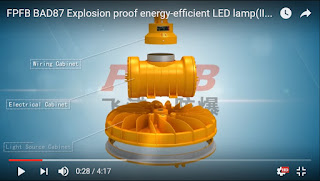


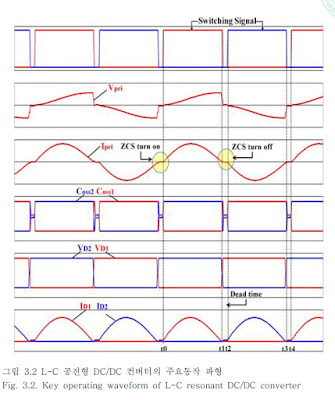





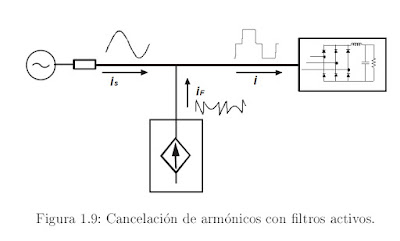





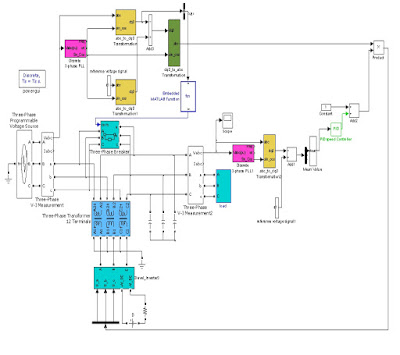

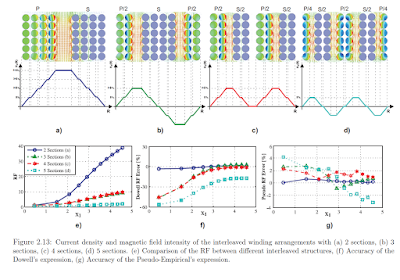
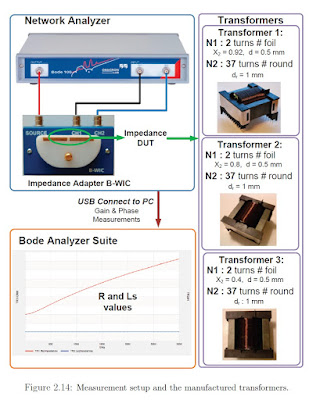
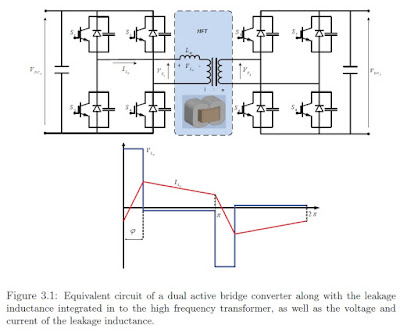


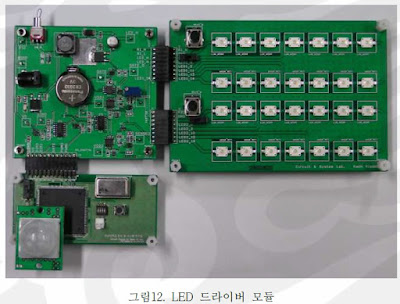

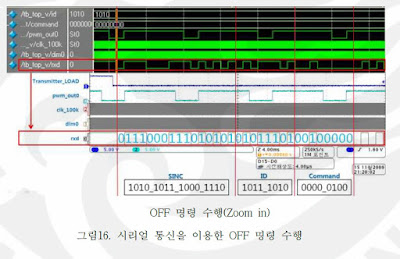


























 JOSIL ARTISTA PLASTICO FORTALEZA CEARA BRASIL AV.HERACLITO GRAÇA 41 TEL(85)32542378
JOSIL ARTISTA PLASTICO FORTALEZA CEARA BRASIL AV.HERACLITO GRAÇA 41 TEL(85)32542378















